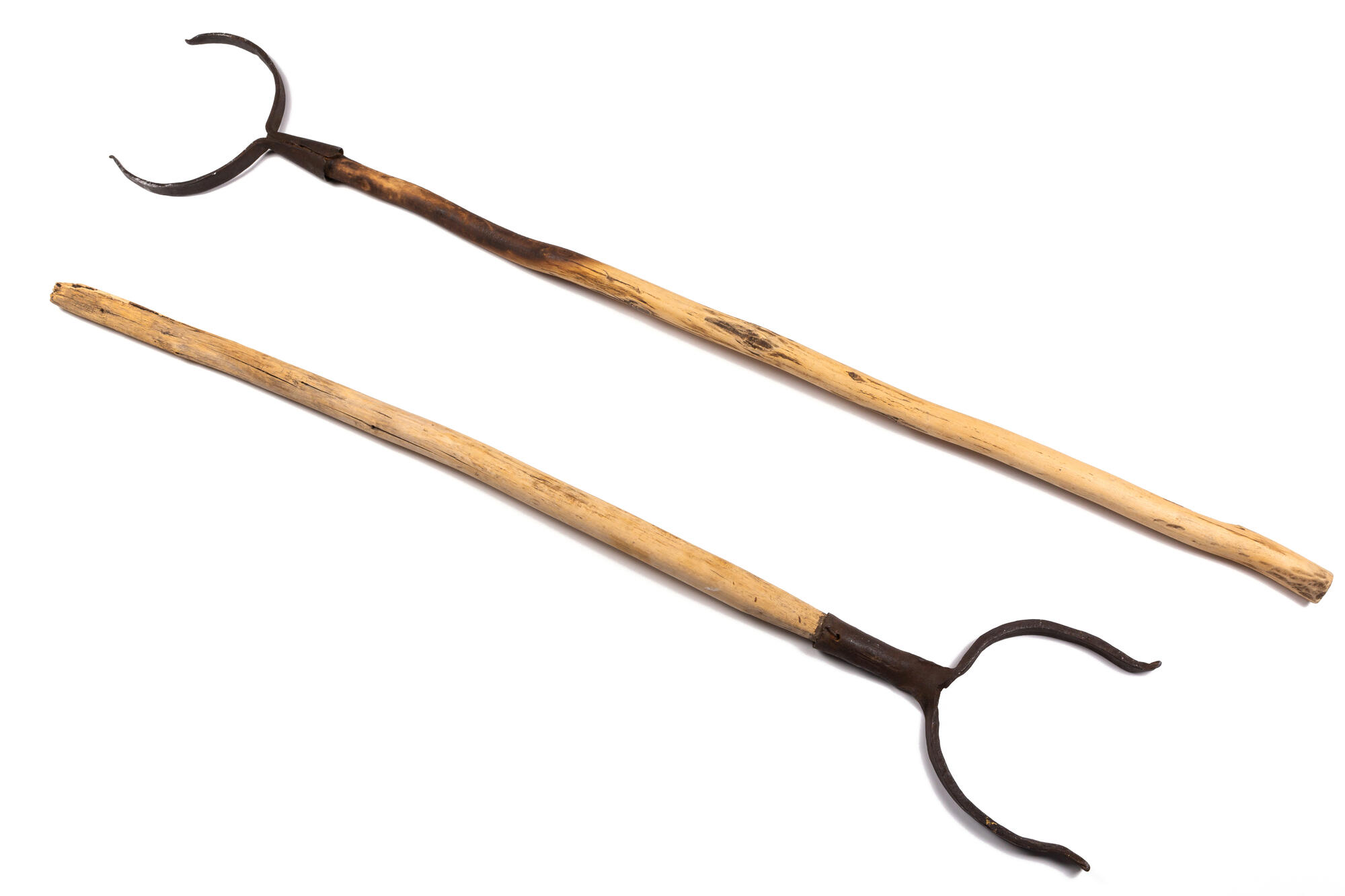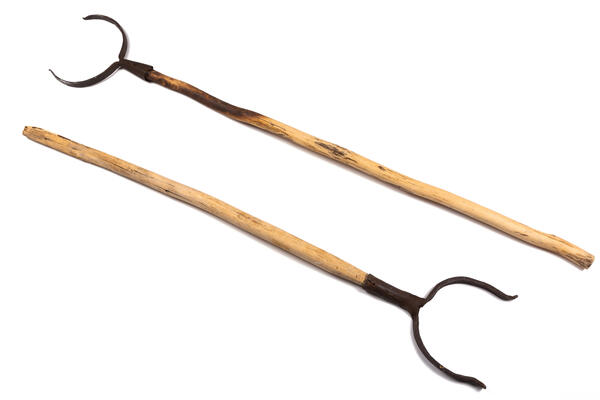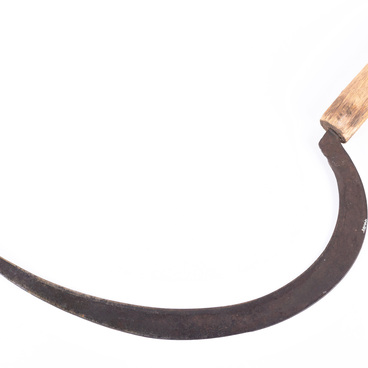It is impossible to imagine a traditional Russian izba (hut) without an oven and the numerous utensils that were used with it. Among these items, frying pans, oven sweepers, peels, pokers, and of course oven forks were especially common. This is a long wooden stick with a metal slingshot-shaped endpiece used to grab and put cast iron pots into the fire, and then get them out from the oven’s deep part, that contained porridge, cabbage soup, and water. The oven forks on display in the museum were made at the beginning of the 20th century.
The oven forks, like other items for the hearth, were kept in a space below the oven, and were always kept close at hand by the izba’s owners. To avoid confusion with the numerous objects that had identical handles, identification marks were often carved onto them. The house usually had several oven forks of different sizes for large and small pots, and with handles of different lengths. Every size of cast iron available on the farm had its own oven fork: there were large cast iron vessels for making stews and boiling food in a Russian oven.
Usually only the women handled the oven forks, since cooking — and all matters related to the oven in general — were taken care of by women. There were cases when women used the oven fork as a weapon to attack or defend themselves. A woman armed with an oven fork is virtually a classic image of country life. It is not by chance that the proverb exists: ‘On old woman with an oven fork could even attack a bear! ’ There was also a commonplace superstition: to prevent the house spirit from leaving if the master of the house left home, it was necessary to block the oven with an oven fork, or close it off with a stove damper.
This was said about the oven fork: ‘Grab the oven fork and run into people! ’ Also, people tried to solve riddles about it: ‘A horn but not a bull, it catches but is not full, it gives to people and goes to rest itself’; ‘A crooked thing that climbed under the pot’. The very word ‘ukhvat’ (Russian for oven fork) is not only widespread, but also is part of the literary language. Often it can be found in fiction when describing peasant life. ‘… Benches, a table, a washstand on a string, a towel on a nail, an oven fork in the corner, and a wide hearth lined with pots — everything was like in an ordinary izba, ” wrote Alexander Pushkin in the historical novel The Captain’s Daughter.
The oven forks, like other items for the hearth, were kept in a space below the oven, and were always kept close at hand by the izba’s owners. To avoid confusion with the numerous objects that had identical handles, identification marks were often carved onto them. The house usually had several oven forks of different sizes for large and small pots, and with handles of different lengths. Every size of cast iron available on the farm had its own oven fork: there were large cast iron vessels for making stews and boiling food in a Russian oven.
Usually only the women handled the oven forks, since cooking — and all matters related to the oven in general — were taken care of by women. There were cases when women used the oven fork as a weapon to attack or defend themselves. A woman armed with an oven fork is virtually a classic image of country life. It is not by chance that the proverb exists: ‘On old woman with an oven fork could even attack a bear! ’ There was also a commonplace superstition: to prevent the house spirit from leaving if the master of the house left home, it was necessary to block the oven with an oven fork, or close it off with a stove damper.
This was said about the oven fork: ‘Grab the oven fork and run into people! ’ Also, people tried to solve riddles about it: ‘A horn but not a bull, it catches but is not full, it gives to people and goes to rest itself’; ‘A crooked thing that climbed under the pot’. The very word ‘ukhvat’ (Russian for oven fork) is not only widespread, but also is part of the literary language. Often it can be found in fiction when describing peasant life. ‘… Benches, a table, a washstand on a string, a towel on a nail, an oven fork in the corner, and a wide hearth lined with pots — everything was like in an ordinary izba, ” wrote Alexander Pushkin in the historical novel The Captain’s Daughter.



